Kenneth C. Davis's Blog, page 25
January 4, 2022
The Memory Hole
(Originally posted August 19, 2021; reposting on 1/4/2022 as we near the first anniversary of the Capitol Insurrection)
Whose history is it? Who gets to tell it? And whose truth ends up in schoolbooks?
I pondered these questions after hearing President Biden address the recent ceremony honoring the police officers who defended the Capitol on January 6, 2021. During the event, the president said:
“The tragedy of that day deserves the truth above all else. We cannot allow history to be rewritten. We cannot allow the heroism of these officers to be forgotten. We have to understand what happened — the honest and unvarnished truth. We have to face it. That’s what great nations do.”
President Biden’s words recalled something another president articulated five years earlier:
“A great Nation does not hide its history; it faces its flaws and corrects them. This museum tells the truth: that a country founded on the promise of liberty held millions in chains…that the price of our Union was America’s original sin.”
— George W. Bush in dedicating the National Museum of African American History and Culture (9/24/2016)
At this moment, the United States is in a war over who gets to tell two pieces of history with extraordinary relevance and resonance. The story of the January 6 insurrection to overturn an election and subvert American democracy at the behest of a defeated president is one of these battles for history.
[Read and watch the New York Times video account of the events of January 6.]
“The visual investigation, ‘Day of Rage,’ which was published digitally on June 30 and which is part of a print special section in Sunday’s paper [August 15, 2021], comes as conservative lawmakers continue to minimize or deny the violence, even going as far as recasting the riot as a ‘normal tourist visit.’”
The other is the titanic, racially-charged struggle over how we teach our children, and ourselves, about the country’s “original sin” – the Great Contradiction that a nation “conceived in liberty” was also born in shackles. That is no “theory” but a powerful thread of facts, events, and documents that course through the nation’s historical fabric.
Read: “The American Contradiction: Conceived in Liberty, Born in Shackles,” my article on teaching and talking abut slavery in U.S. History in Social Education (March/April 2020)
That “winners write history” is a well-worn adage. The United States has clearly had its share of a history composed largely by one group of winners. They were white, Anglo men who threaded together a proud, patriotic tale of the birth of a nation. It dropped a great many stitches. It was for that reason that Founder John Adams would write,
“The history of our country will be one continued lie from one end to the other. The essence of the whole will be that Dr. Franklin’s electrical rod smote the earth and out sprang General Washington.”
Adams was not far off. For much of the nation’s existence, its narrative has been crafted into a tidy legend by men who helped create the shibboleth now called “American Exceptionalism.”
The United States has no monopoly on the desire to promulgate a blemish-free narrative of its past. In Italy, Mussolini once said,
“Our myth is the Nation, our myth is the greatness of the Nation! And to this myth, to this grandeur, that we wish to translate into a complete reality, we subordinate all the rest.”
–From Herman Finer, Mussolini’s Italy (1935), p. 218; quoted in Franklin Le Van Baumer, ed., Main Currents of Western Thought (New Haven: Yale University Press, 1978), p.748.
The Soviet Union was notorious for its vanishing generals – men wiped from Kremlin photographs following each Stalinist purge. Japan balks at any mention of its wartime atrocities, including the mistreatment of captive Korean “comfort women.” And as China celebrated one hundred years of the Communist Party, the erasure of such events as mass starvation and the Tiananmen Square massacre is complete.
Read “Democracy is not a spectator sport,” my article published in Social Education (September 2019 issue)
One notable exception has been Germany, where Holocaust studies including visits to concentration camp sites are mandatory in high school. On the other hand, it is worth noting that right-wing nationalist groups have been pushing back on the requirement. In Germany, writes The Atlantic’s Emily Schulthies, leaders of Alternative for Germany, a right-wing party, “have sought to diminish the importance of the Nazi era to produce an argument for renewed national pride: The party’s co-leader Alexander Gauland referred to it as a ‘speck of bird poop’ in Germany’s otherwise admirable history….” (The Atlantic, April 10, 2019)
Of course, the man who understood the control of history better than anyone was George Orwell.
“When one knew that any document was due for destruction, it was an automatic action to lift the flap of the nearest memory hole and drop it in, whereupon it would be whirled away on a current of warm air to the enormous furnaces….
–George Orwell, 1984 (p. 35)
Orwell’s “memory hole” demonstrated the unconstrained power of the Party to shape both history and language. It is a lesson on display at this moment –not in darkened corridors but in broad daylight as January 6 has emerged in some accounts as an ordinary tourist day and America’s racist past is buried by state legislators who can’t stand the truth.
Strongmen and dictators of every stripe understand the central importance of Orwell’s “memory hole.” Tyrants know how to destroy a set of facts and create new ones –the “Big Lie” that demands complete submission. As Mussolini’s Fascist creed put it: “Believe Obey Fight.”
While part of the historian’s work is to recover and restore the true record of what happened, the facts should never be consigned to the memory hole’s furnace in the first place. Replacing truth with “Big Lie” partisan narratives or indoctrination sessions is the devious work of propaganda meant to sway people to “Believe” and “Obey.”
Instead, we must stay vigilant, dedicated to Truth. That, after all, is what sets us free.
© 2021, 2022 Copyright Kenneth C. Davis All rights reserved
December 26, 2021
STRONGMAN: The Rise of Five Dictators and the Fall of Democracy
 December 26 1893 Mao Zedong is born.
December 26 1893 Mao Zedong is born.
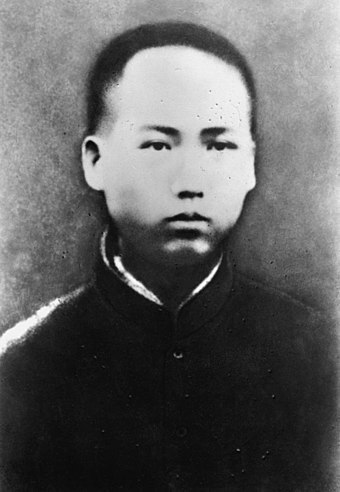
Listen to this audio lesson about Kristallnacht.
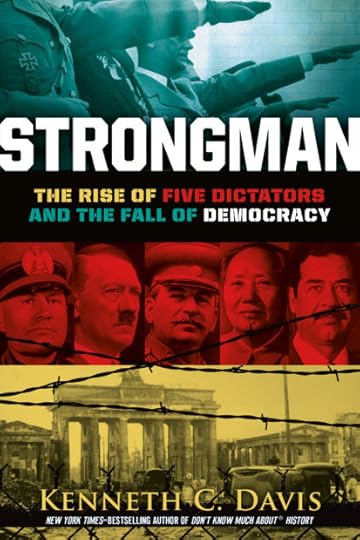 STRONGMAN has been named one of the “Best Children’s Books of the Year-2021” by the Bank Street College of Education.STRONGMAN tells the real stories of the lives and times of five of the most deadly dictators of the 20th century — Mussolini, Hitler, Stalin, Mao Zedong, and Saddam Hussein.Order the hardcover and e-book from Holt Books
STRONGMAN has been named one of the “Best Children’s Books of the Year-2021” by the Bank Street College of Education.STRONGMAN tells the real stories of the lives and times of five of the most deadly dictators of the 20th century — Mussolini, Hitler, Stalin, Mao Zedong, and Saddam Hussein.Order the hardcover and e-book from Holt Books An audiobook is available from Penguin Random House
Strongman named among Washington Post Best Books of 2020Named to “Best Young Adult Books of the Year” by Kirkus ReviewsNamed to “Best YA Books of 2020 for Understanding the US Today” Kirkus ReviewsStarred review from Kirkus Reviews: “History’s warnings reverberate in this gripping read about five dictatorial strongmen. A pitch-perfect balance of nuanced reflection and dire warning.”Read the full review hereStarred Review from Publishers Weekly: “A fascinating, highly readable portrayal of infamous men that provides urgent lessons for democracy now.”Read the full review hereStarred Review from Shelf Awareness: “Kenneth C. Davis…conveys his plentiful knowledge of dictators in this powerful, spine-tingling biographic work that covers five of the world’s most horrifying autocrats. Grounded in thorough research, Strongman expertly explores the fragility of democracy …” Read the full review here•2021 YALSA Nonfiction Award nominee
A review in Booklist says, “Davis does not sugarcoat his material, inviting long thoughts with his assertion that this is a decidedly human story that points to real people as evidence that evil exists in this troubled world.”
In addition to telling how these men took unlimited power, brought one-party rule to their nations, and were responsible for the deaths of millions of people, the book offers a brief history of Democracy and discusses the present threat to democratic institutions around the world.
In a time when Democracy is under assault across the globe, it is more important than ever to understand how a Strongman takes power and how quickly democracy can vanish –even as millions cheer its death.
ADVANCE PRAISE FOR STRONGMAN
“I found myself engrossed in it from beginning to end. I could not help admiring Davis’s ability to explain complex ideas in readable prose that never once discounted the intelligence of young readers. It is very much a book for our time.”
—Sam Wineburg, Margaret Jacks Professor of Education & History, Stanford University, author of Why Learn History (When It’s Already on Your Phone).
“Strongman is a book that is both deeply researched and deeply felt, both an alarming warning and a galvanizing call to action, both daunting and necessary to read and discuss.”
—Cynthia Levinson, author of Fault Lines in the Constitution: The Framers, Their Fights, and the Flaws That Affect Us Today
“A wake-up call to democracies like ours: we are not immune to despots . . . Strongman demonstrates that democracy is not permanent, unless it is collectively upheld. This book shakes that immortality narrative.”
—Jessica Ellison, President of the Minnesota Council for the Social Studies; Teacher Education Specialist, Minnesota Historical Society
Rarely does a history book take such an unflinching look at our common future, where the very presence of democracy is less than certain; even rarer is a history book in which the author’s moral convictions incite young readers to civic engagement; rarest of all, a history book as urgent, as impassioned, and as timely as Kenneth C. Davis’ Strongman.
—Eugene Yelchin, author of the Newbery Honor book Breaking Stalin’s Nose.
December 20, 2021
Winter Solstice 2021: The “Reason for the Season”
The 2021 Winter Solstice arrives on December 21 at 10:59 am EST. Thus saith the Farmer’s Almanac.
So ’tis a perfect day to talk about the real “reason for the season.”
Here’s the real first Christmas question: Why all the fuss over December 25?
For starters, the Gospels never mention a precise date or even a season for the birth of Jesus. How then did we settle on December 25 and all those festive lights?
If a bright light just went off in your head, you’re getting warm. It is largely about the Sun.
In ancient times, a popular Roman festival celebrated Saturnalia, a Thanksgiving-like holiday marking the winter solstice and honoring Saturn, the god of agriculture. The Saturnalia began on December 17th and while it only lasted two days at first, it was eventually extended into a weeklong period that lost its agricultural significance and simply became a time of general merriment. Even slaves were given temporary freedom to do as they pleased, while the Romans feasted, visited one another, lit candles and gave gifts. Later it was changed to honor the official Roman Sun god known as Sol Invictus (“Unconquered Sun”) and the solstice fell on December 25.
Two other important pagan gods popular in ancient Rome were also celebrated around this date. The Roman were big on adopting the gods of the people they conquered. Mithra, a Persian god of light who was first popular among Roman soldiers, acquired a large cult in ancient Rome. The birth of Attis, another agricultural god from Asia Minor, was also celebrated on December 25. Attis dies but is brought back to life by his lover, a goddess whose temple later became the site of an important basilica honoring the Virgin Mary. By the way, the symbol of Attis was a pine tree.
In northern Europe, the solstice was celebrated with the burning of the “Yule” log. “Yule” meant wheel. It was the wheel of the chariot of Odin bringing the sun –another dead god being revived– back to life.
Candles. Gift giving. Pine trees. Dying gods brought back to life. Hmmm. Sound familiar?
All the similarities between Saturnalia and these other Roman holidays and the celebration of Christmas are no coincidence. In the fourth century, Pope Julius 1 assigned December 25 as the day to celebrate the Mass of Christ’s birth –Christ’s mass. This was a clever marketing ploy that conveniently sidestepped the problem of eliminating an already popular holiday while converting the population.
As Christianity moved into northern Europe, the Norse myths were also repurposed to tell the Christ story.
There is a scholarly argument that the December 25 date was marked earlier in some Christian communities, as argued by Yale Divinity school Dean Andrew McGowan. But the official recognition by the Pope cemented the date for many Christians. In other Christian communities, January 6 — the Epiphany or the day the magi visited the infant Jesus– was considered more significant. The period between these dates also accounts for the “Twelve Days of Christmas.” Other authorities disagree and say that December date was arrived at by adding nine months to March 25, the Feast of the Annunciation, the day of Jesus’s miraculous conception.
But most modern Christmas traditions reflect the merger of pagan rituals, beliefs, and traditions with Christianity. The early church fathers knew that they couldn’t convert people without allowing them to keep some of their ancient festivals and rituals so they would allow them if they could be connected to Christianity.
The importance of the winter solstice, then, is crucial to understanding many of the other traditions of this season. Evergreen trees, mistletoe, holly, and Yule logs all relate back to pre-Christian practices and symbols that celebrate the return of light and life after the Solstice. That’s why the Puritans rejected Christmas celebrations under Cromwell and in the Massachusetts colony in 1659.
Yale Professor Bruce Gordon writes:
“The Puritans sought to turn Christmas into a fast day, with an act of Parliament in 1643 declaring that it should be observed ‘with the more solemn humiliation because it may call to remembrance our sins, and the sins of our forefathers who have turned this Feast, pretending the memory of Christ, into an extreme forgetfulness of him, by giving liberty to carnal and sensual delights.’ Two years later, the Directory of Public Worship was unequivocal that feasts such as Christmas had no warrant in scripture. The attack on Christmas in England was sustained, fierce, hugely divisive, and ultimately a failure. The festival was restored under Charles II in 1660 to much public acclaim.
North of the Scottish border, when Christmas was abolished by Parliament in 1640 it was declared that ‘The kirke within this kingdome is now purged of all superstitious observatione of dayes.’ The legacy lasted almost four hundred years, and Christmas was not restored as a public holiday in Scotland until 1958, remaining to this day very much in the shadow of Hogmanay (New Year). Across the Atlantic, the Puritans of New England demonstrated their contempt for Christmas festivities by ensuring that the day was filled with godly labor.”
—“The Grinch That Didn’t Steal Christmas”
Read my post Who Started the War on Christmas?”
While we are talking about dates, the precise year of the birth of Jesus is also a mystery. The dating system we use is based on a system devised by a monk around 1500 years ago and is seriously flawed. The historical King Herod who ordered the massacre of the innocents died in 4 BC (or BCE, Before the Common Era). The “census” ordered by Emperor Augustine is not recorded in Roman history, but a local census did take place in the Roman province of Judea in 6 AD (or CE, the Common Era). Is that all perfectly clear now?
You can read more about the mythic roots of Christmas and the gospel accounts of Jesus in Don’t Know Much About Mythology and Don’t Know Much About® the Bible.
December 16, 2021
Who Started the “War on Christmas?”

“In the interest of labor and morality” (1895: Image Courtesy of Library of Congress Prints and Photographs Division Washington, D.C. 20540 USA http://hdl.loc.gov/loc.pnp/pp.print)
(Revision of post first published 12.11.2o13. But it never gets old.)
It’s that time of year. Cue the lights, decorations, music.… and the “War on Christmas.”
Proclaiming a secular assault on the religious significance of the holiday has become a seasonal tradition, just like the Macy’s Parade with Santa Claus. Saying “Merry Christmas” has been a staple of conservative talk show hosts for years and part of America’s political culture wars..
The basic premise: Christmas is under attack by Grinchy atheists and secular humanists who want to remove any vestige of Christianity from the public space. Any criticism of public displays devoted to religious symbols –mangers, crosses, stars — is seen by these folks as part of a wider attack on “Christian values” in America. Mass market retailers who substituted “Happy Holidays” for “Merry Christmas” are part of the conspiracy to “ruin Christmas.”
But in fact, most religious displays are not banned. Courts simply direct that one religion cannot be favored over another under the Constitutional protections of the First Amendment. Christmas displays are generally permitted as long as menorahs, Kwanzaa displays, and other seasonal symbols are also allowed.
In other words, the “War on Christmas” is pretty much a phony war. But where did this all start?
The first laws against Christmas celebrations and festivities in America came during the 1600s –from the same wonderful folks who brought you the Salem Witch Trials — the Puritans. (By the way, H.L. Mencken once defined Puritanism as the fear that “somewhere someone may be happy.”)
“For preventing disorders, arising in several places within this jurisdiction by reason of some still observing such festivals as were superstitiously kept in other communities, to the great dishonor of God and offense of others: it is therefore ordered by this court and the authority thereof that whosoever shall be found observing any such day as Christmas or the like, either by forbearing of labor, feasting, or any other way, upon any such account as aforesaid, every such person so offending shall pay for every such offence five shilling as a fine to the county.”
–From the records of the General Court,
Massachusetts Bay Colony
May 11, 1659
The Founding Fathers of the Massachusetts Bay Colony were not a festive bunch. To them, Christmas was a debauched, wasteful festival that threatened their core religious beliefs. They understood that most of the trappings of Christmas –like holly and mistletoe– were vestiges of ancient pagan rituals. More importantly, they thought Christmas — the mass of Christ– was too “popish,” by which they meant Roman Catholic. These are the people who banned Catholic priests from Boston under penalty of death.
This sensibility actually began over the way in which Christmas was celebrated in England. Oliver Cromwell, a strict Puritan who took over England in 1645, believed it was his mission to cleanse the country of the sort of seasonal moral decay that Protestant writer Philip Stubbes described in the 1500s:
‘More mischief is that time committed than in all the year besides … What dicing and carding, what eating and drinking, what banqueting and feasting is then used … to the great dishonour of God and the impoverishing of the realm.’
In 1644, Parliament banned Christmas celebrations. Attending mass was forbidden. Under Cromwell’s Commonwealth, mince pies, holly and other popular customs fell victim to the Puritan mission to remove all merrymaking during the Christmas period. To Puritans, the celebration of the Lord’s birth should be day of fasting and prayer.
In England, the Puritan War on Christmas lasted until 1660. In Massachusetts, the ban remained in place until 1687.
So if the conservative broadcasters and religious folk really want a traditional, American Christian Christmas, the solution is simple — don’t have any fun.
Read my article on religion in America, “America’s True History of Religious Tolerance” (Smithsonian)
And read more about the Puritans in Don’t Know Much About® History and America’s Hidden History. The history behind Christmas is also told in Don’t Know Much About® The Bible.

America’s Hidden History, includes tales of “Forgotten Founders”
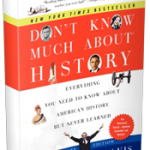
Don’t Know Much About History (Revised, Expanded and Updated Edition)
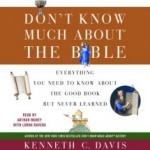
December 4, 2021
The Hidden History of America At War (C-Span video)
(Originally posted in June 2015; updated December 4, 2021)
On December 4, 1783, General George Washington bid farewell to his troops at the historic Fraunces Tavern Museum in Lower Manhattan.
In 2015, I spoke there about my book THE HIDDEN HISTORY OF AMERICA AT WAR: Untold Tales from Yorktown to Fallujah.
The event was filmed by C-Span and can be seen here. The book includes a chapter about the battle of Yorktown.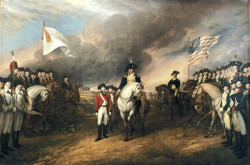
Read more about these events in…
November 20, 2021
Remembering the Nuremberg Trials: A Don’t Know Much About® Audiominute
(Originally posted January 26, 2021)
The Nuremberg Trials — A Don’t Know Much About® Audiominute
On November 20, 1945, in the aftermath of World War II, the first trials of Nazi war criminals began. This military tribunal, the Nuremberg Trials, as they came to be known, was convened by the four victorious Allies—Great Britain, France, the Soviet Union, and the United States.
Listen to this audiominute.
https://dontknowmuch.com/wp-content/uploads/2020/11/New-Recording-9.m4a
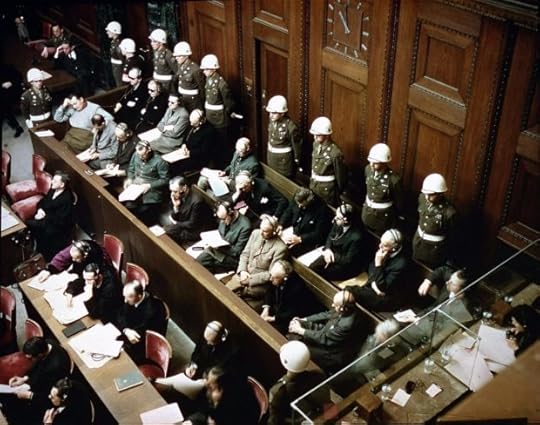
Defendants in the Dock at the Nuremberg Trials (Image: National Archives)
“That four great nations, flushed with victory and stung with injury stay the hand of vengeance and voluntarily submit their captive enemies to the judgment of the law is one of the most significant tributes that Power has ever paid to Reason.
What makes this inquest significant is that these prisoners represent sinister influences that will lurk in the world long after their bodies have returned to dust. We will show them to be living symbols of racial hatreds, of terrorism and violence, and of the arrogance and cruelty of power.”
-United States Prosecutor Robert Jackson, Opening Statement (11/21/1945)
Read Robert Jackson’s full opening statement here
This is a timeline of the Nuremberg Trials from the Robert H. Jackson Center.
These resources on the Nuremberg Trials are from the Library of Congress.
This is an article about the Nuremberg Trials I wrote in 2005 for the Rutland (VT) Herald.
November 12, 2021
Two for Thanksgiving: Real First Pilgrims & Holiday’s History
On the holiday calendar, when we leave Veterans Day behind, we round towards Thanksgiving –perhaps America’s most beloved, widely shared, and mythologized celebration. Very much like last year, when the country was deep in the Covid pandemic, this Thanksgiving is different. More than 750,000 Americans have died of Covid since the pandemic began.
Life in America has been transformed. And many of us will still be home for the holidays.
But this reminds me of the notion that Abraham Lincoln’s first Thanksgiving proclamation in 1863 (See below) came in the midst of the Civil War when it also must have felt like there was little to be thankful for or to celebrate.
Home alone? Here’s something to read.
Like the Macy’s parade, this is my Thanksgiving tradition. I post two articles about the holiday that appeared on the Op-Ed page of the New York Times.
The first, from 2008, is called “A French Connection” and tells the story of the real first Pilgrims in America. They were French. In Florida. Fifty years before the Mayflower sailed. It did not end with a happy meal. In fact, it ended in a religious massacre.

Illustration by Nathalie Lété in the New York Times
TO commemorate the arrival of the first pilgrims to America’s shores, a June date would be far more appropriate, accompanied perhaps by coq au vin and a nice Bordeaux. After all, the first European arrivals seeking religious freedom in the “New World” were French. And they beat their English counterparts by 50 years. That French settlers bested the Mayflower Pilgrims may surprise Americans raised on our foundational myth, but the record is clear.
The complete story can be found in America’s Hidden History.

America’s Hidden History, includes tales of “Forgotten Founders”
The second is “How the Civil War Created Thanksgiving” (2014) and tells the story of the Union League providing Thanksgiving dinners to Union troops.
Of all the bedtime-story versions of American history we teach, the tidy Thanksgiving pageant may be the one stuffed with the heaviest serving of myth. This iconic tale is the main course in our nation’s foundation legend, complete with cardboard cutouts of bow-carrying Native American cherubs and pint-size Pilgrims in black hats with buckles. And legend it largely is.
In fact, what had been a New England seasonal holiday became more of a “national” celebration only during the Civil War, with Lincoln’s proclamation calling for “a day of thanksgiving” in 1863.
Enjoy them both.

Don’t Know Much About® History: Anniversary Edition

Don’t Know Much About the Civil War (Harper paperback, Random House Audio)

Now In paperback THE HIDDEN HISTORY OF AMERICA AT WAR: Untold Tales from Yorktown to Fallujah
November 10, 2021
11-11-11: Don’t Know Much About Veterans Day-The Forgotten Meaning
“The eleventh hour of the eleventh day of the eleventh month.”
(This is a revised version of a post originally written for Veterans Day in 2011. The meaning still applies.)

Taken at 10:58 a.m., on Nov. 11, 1918, just before the Armistice went into effect; men of the 353rd Infantry, near a church, at Stenay, Meuse, wait for the end of hostilities. (SC034981)
On Veterans Day, a reminder of what the day once meant and what it should still mean.
That was the moment at which World War I –then called THE GREAT WAR– largely came to end in 1918, on the eleventh hour of the eleventh day of the eleventh month.
One of the most tragically senseless and destructive periods in all history came to a close in Western Europe with the Armistice –or end of hostilities between Germany and the Allied nations — that began at that moment. Some 20 million people had died in the fighting that raged for more than four years since August 1914. The formal end of the war came with the Treaty of Versailles in June 1919.
Today, it is important to recognize the role of that treaty and the war in the rise of some of the most murderous dictators in history. That history is told in my new book, Strongman: The Rise of Five Dictators and the Fall of Democracy.
Besides the war casualties, an estimated 100 million people died during the war of the Spanish flu, a worldwide pandemic that was completely linked to the war and had an impact on its outcome. That is the subject of my recent book, More Deadly Than War:The Hidden History of the Spanish Flu and the First World War.

The date of November 11th became a national holiday of remembrance in many of the victorious allied nations –a day to commemorate the loss of so many lives in the war. And in the United States, President Wilson proclaimed the first Armistice Day on November 11, 1919. A few years later, in 1926, Congress passed a resolution calling on the President to observe each November 11th as a day of remembrance:
Whereas the 11th of November 1918, marked the cessation of the most destructive, sanguinary, and far reaching war in human annals and the resumption by the people of the United States of peaceful relations with other nations, which we hope may never again be severed, and
Whereas it is fitting that the recurring anniversary of this date should be commemorated with thanksgiving and prayer and exercises designed to perpetuate peace through good will and mutual understanding between nations; and
Whereas the legislatures of twenty-seven of our States have already declared November 11 to be a legal holiday: Therefore be it Resolved by the Senate (the House of Representatives concurring), that the President of the United States is requested to issue a proclamation calling upon the officials to display the flag of the United States on all Government buildings on November 11 and inviting the people of the United States to observe the day in schools and churches, or other suitable places, with appropriate ceremonies of friendly relations with all other peoples.
Of course, the hopes that “the war to end all wars” would bring peace were short-lived. By 1939, Europe was again at war and what was once called “the Great War” would become World War I. With the end of World War II, there was a movement in America to rename Armistice Day and create a holiday that recognized the veterans of all of America’s conflicts. President Eisenhower signed that law in 1954. (In 1971, Veterans Day began to be marked as a Monday holiday on the third Monday in November, but in 1978, the holiday was returned to the traditional November 11th date).
Today, Veterans Day honors the duty, sacrifice and service of America’s nearly 25 million veterans of all wars, unlike Memorial Day, which specifically honors those who died fighting in America’s wars.
We should remember and celebrate all those men and women. But lost in that worthy goal is the forgotten meaning of this day in history –the meaning which Congress gave to Armistice Day in 1926:
to perpetuate peace through good will and mutual understanding between nations …
inviting the people of the United States to observe the day … with appropriate ceremonies of friendly relations with all other peoples.
The Library of Congress offers an extensive Veterans History Project.
Read more about World War I and all of America’s conflicts in Don’t Know Much About History and Don’t Know Much About the American Presidents.
I discuss the role of Americans in battle in more than 240 years of American history in THE HIDDEN HISTORY OF AMERICA AT WAR: Untold Tales from Yorktown to Fallujah (Hachette Books and Random House Audio).
MORE DEADLY THAN WAR: The Hidden History of the Spanish Flu and the First World War was published in May 2018.


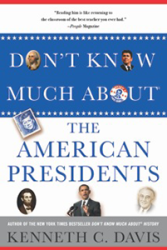
November 9, 2021
STRONGMAN: The Rise of Five Dictators and the Fall of Democracy
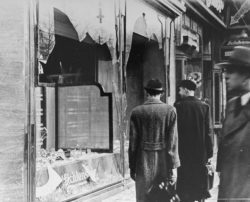
US Holocaust Memorial Museum, courtesy of National Archives and Records Administration, College Park
Read more about this chapter in history and Hitler’s rise in Strongman.Listen to this audio lesson about Kristallnacht.
 STRONGMAN has been named one of the “Best Children’s Books of the Year-2021” by the Bank Street College of Education.STRONGMAN tells the real stories of the lives and times of five of the most deadly dictators of the 20th century — Mussolini, Hitler, Stalin, Mao Zedong, and Saddam Hussein.Order the hardcover and e-book from Holt Books
STRONGMAN has been named one of the “Best Children’s Books of the Year-2021” by the Bank Street College of Education.STRONGMAN tells the real stories of the lives and times of five of the most deadly dictators of the 20th century — Mussolini, Hitler, Stalin, Mao Zedong, and Saddam Hussein.Order the hardcover and e-book from Holt Books An audiobook is available from Penguin Random House
Strongman named among Washington Post Best Books of 2020Named to “Best Young Adult Books of the Year” by Kirkus ReviewsNamed to “Best YA Books of 2020 for Understanding the US Today” Kirkus ReviewsStarred review from Kirkus Reviews: “History’s warnings reverberate in this gripping read about five dictatorial strongmen. A pitch-perfect balance of nuanced reflection and dire warning.”Read the full review hereStarred Review from Publishers Weekly: “A fascinating, highly readable portrayal of infamous men that provides urgent lessons for democracy now.”Read the full review hereStarred Review from Shelf Awareness: “Kenneth C. Davis…conveys his plentiful knowledge of dictators in this powerful, spine-tingling biographic work that covers five of the world’s most horrifying autocrats. Grounded in thorough research, Strongman expertly explores the fragility of democracy …” Read the full review here•2021 YALSA Nonfiction Award nominee
A review in Booklist says, “Davis does not sugarcoat his material, inviting long thoughts with his assertion that this is a decidedly human story that points to real people as evidence that evil exists in this troubled world.”
In addition to telling how these men took unlimited power, brought one-party rule to their nations, and were responsible for the deaths of millions of people, the book offers a brief history of Democracy and discusses the present threat to democratic institutions around the world.
In a time when Democracy is under assault across the globe, it is more important than ever to understand how a Strongman takes power and how quickly democracy can vanish –even as millions cheer its death.
ADVANCE PRAISE FOR STRONGMAN
“I found myself engrossed in it from beginning to end. I could not help admiring Davis’s ability to explain complex ideas in readable prose that never once discounted the intelligence of young readers. It is very much a book for our time.”
—Sam Wineburg, Margaret Jacks Professor of Education & History, Stanford University, author of Why Learn History (When It’s Already on Your Phone).
“Strongman is a book that is both deeply researched and deeply felt, both an alarming warning and a galvanizing call to action, both daunting and necessary to read and discuss.”
—Cynthia Levinson, author of Fault Lines in the Constitution: The Framers, Their Fights, and the Flaws That Affect Us Today
“A wake-up call to democracies like ours: we are not immune to despots . . . Strongman demonstrates that democracy is not permanent, unless it is collectively upheld. This book shakes that immortality narrative.”
—Jessica Ellison, President of the Minnesota Council for the Social Studies; Teacher Education Specialist, Minnesota Historical Society
Rarely does a history book take such an unflinching look at our common future, where the very presence of democracy is less than certain; even rarer is a history book in which the author’s moral convictions incite young readers to civic engagement; rarest of all, a history book as urgent, as impassioned, and as timely as Kenneth C. Davis’ Strongman.
—Eugene Yelchin, author of the Newbery Honor book Breaking Stalin’s Nose.
October 28, 2021
Who Said It? 10/28/2021
President Dwight D. Eisenhower (June 14, 1953)

President Eisenhower (Courtesy: Eisenhower Presidential Library and Museum)
Look at your country. Here is a country of which we are proud, as you are proud of Dartmouth and all about you, and the families to which you belong. But this country is a long way from perfection–a long way. We have the disgrace of racial discrimination, or we have prejudice against people because of their religion. We have crime on the docks. We have not had the courage to uproot these things, although we know they are wrong. And we with our standards, the standards given us at places like Dartmouth, we know they are wrong.
Now, that courage is not going to be satisfied–your sense of satisfaction is not going to be satisfied, if you haven’t the courage to look at these things and do your best to help correct them, because that is the contribution you shall make to this beloved country in your time. Each of us, as he passes along, should strive to add something.
It is not enough merely to say I love America, and to salute the flag and take off your hat as it goes by, and to help sing the Star Spangled Banner. Wonderful! We love to do them, and our hearts swell with pride, because those who went before you worked to give to us today, standing here, this pride.
And this is a pride in an institution that we think has brought great happiness, and we know has brought great contentment and freedom of soul to many people. But it is not yet done. You must add to it.
Don’t join the book burners. Don’t think you are going to conceal faults by concealing evidence that they ever existed. Don’t be afraid to go in your library and read every book, as long as that document does not offend our own ideas of decency. That should be the only censorship.
“Remarks at the Dartmouth College Commencement Exercises”
Source and complete text: Dwight D. Eisenhower, Remarks at the Dartmouth College Commencement Exercises, Hanover, New Hampshire. Online by Gerhard Peters and John T. Woolley, The American Presidency Project



